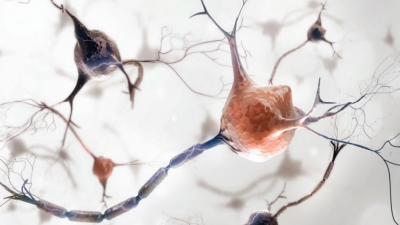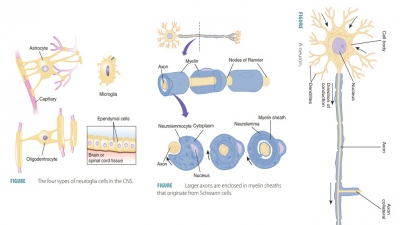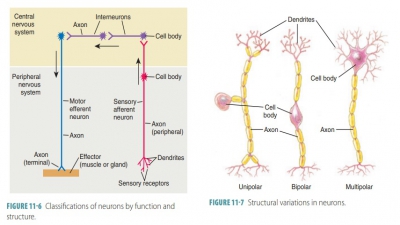Types of Fibers
| Home | | Anatomy and Physiology | | Anatomy and Physiology Health Education (APHE) |Chapter: Anatomy and Physiology for Health Professionals: Support and Movement: Muscular System
Most skeletal muscle fibers are called fast fibers because they can reach peak twitch tension in 0.01 seconds or less after stimulation.
Types of
Fibers
Most skeletal muscle fibers are
called fast fibers because they can
reach peak twitch tension in 0.01 seconds or less after stimulation. They are
large in diameter, containing large reserves of glycogen, relatively few
mitochondria, and densely packed myofibrils. Muscles with fast fibers produce
powerful contractions because the produced tension is proportional to the
number of myofibrils, yet they fatigue quickly because adenosine triphosphate
is used in large amounts. Slow fibers
are only about half the diameter of fast fibers, taking three times as long to
reach peak tension. They can contract longer than fast fibers and are
surrounded by a larger network of capillaries. They have a much higher oxygen
supply to support their mitochondria. They also contain the red pigment myoglobin, which is similar to
hemo-globin. Both pigments reversibly bind oxygen molecules. Myoglobin allows
resting slow fibers to hold large oxygen reserves to be used during
contractions. Slow fibers give skeletal muscles a dark red appearance because
of the extensive capillaries and the large amounts of myoglobin.
Intermediate fibers look more like fast fibers, but their properties are mostly “in
between” those of fast and slow fibers. They are paler because they contain low
amounts of myoglobin. However, they are more resistant to fatigue than fast
fibers. Muscles that have mostly fast fibers are often referred to as white muscles, whereas muscles that have
mostly slow fibers are often referred to as red
muscles.
The diaphragm is a dome-shaped
muscle located below the lungs. (The diaphragm muscle is only dis-cussed
briefly here.) As it moves downward, the tho-racic cavity enlarges and
atmospheric pressure forces air into the airways. While it is contracting and
mov-ing downward, the ribs are raised and the sternum elevates, allowing more
air to enter the airways. As the diaphragm and external intercostal muscles
relax after inspiration, the lungs and thoracic cage return to their original
shapes. The diaphragm is pushed upward to force air inside the lungs out
through the respiratory passages. The abdominal wall mus-cles increase pressure
and force the diaphragm even higher against the lungs to squeeze additional air
out of them.
Related Topics




